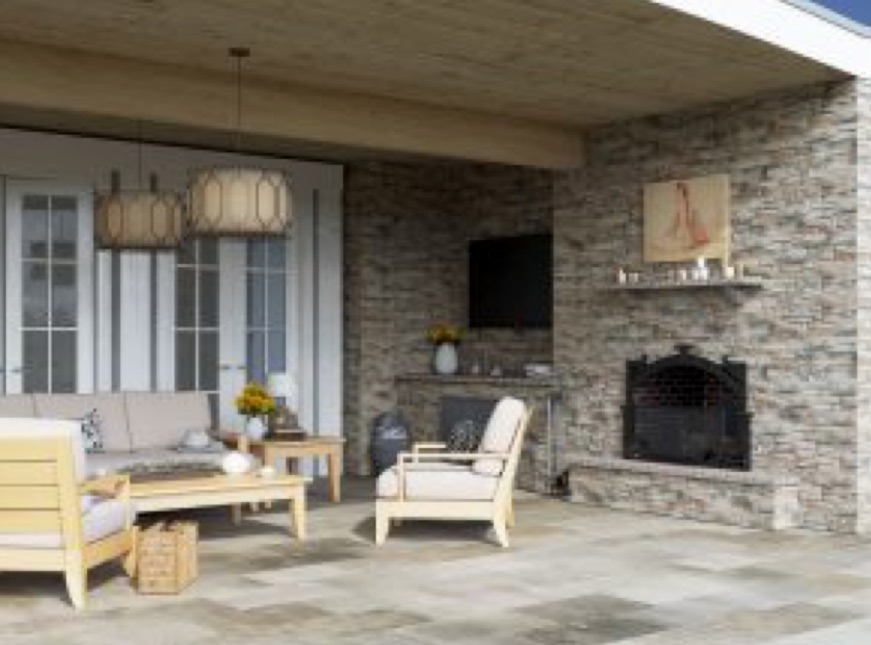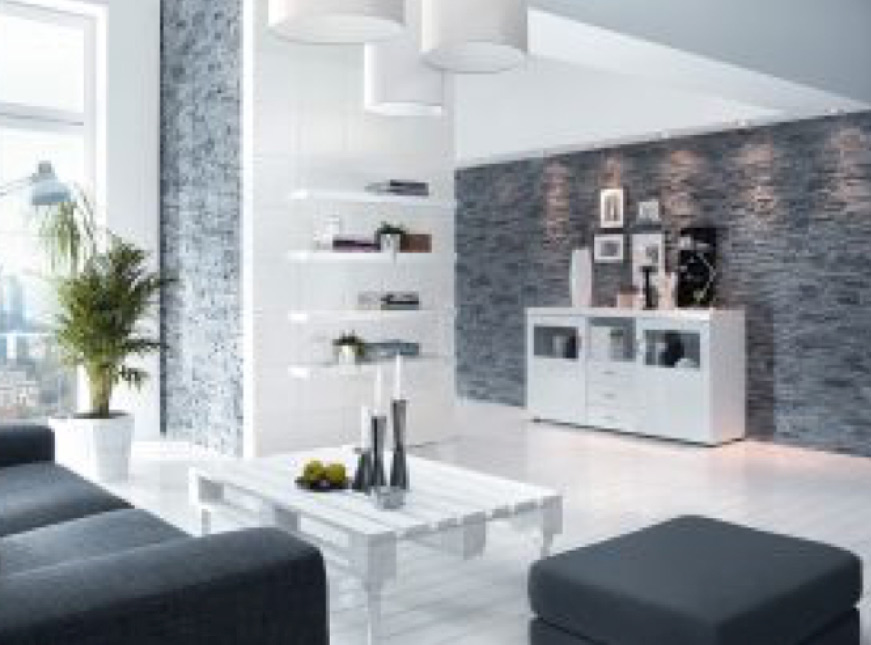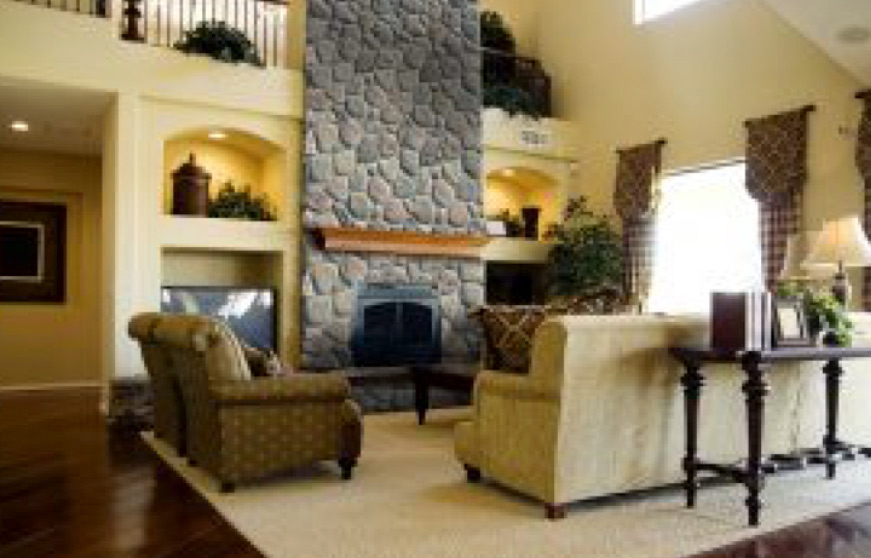Installation
The many benefits of using My Decorative Stones products include the ease of installation. By using our products you can enhance the interior or exterior of your home, property or office. Our products are versatile and low maintenance and installation is simple with stunning results easily achievable with just a little know how.
My Decorative Stones are pleased to provide you with a step by step guide showing you how easy it is to install our products with just a little know how.
Installation Videos
Decoration Stone Assembly Guide
Preparation
Treat clean, dry and level surface with a primer. For gypsum surfaces, use a double coat of the primer. Level the wall by installing a straight strip at its bottom. The ambient temperature during installation should be between 5 ° C and 25 ° C. Before bonding the stone, make sure that tile has no visible defects, and then use a rice brush to clean the stone surfaces to which you will apply the adhesive. When laying stone for outdoor use, remember that the load on the panels is transferred to the substrate. The fences or walls where you place the stone should be isolated horizontally from the foundations.
Assembly
For bonding, depending on the type of stone, use the correct gypsum or cement based adhesive, applying it to the tile using a trowel. If necessary, sand the edge of the stone, removing irregularities. Concrete tiles can be easily cut with an angle grinder with a stone cutting disc, and the gypsum tiles with a hand saw for cutting wood. When applying the adhesive to the stone panel, press it evenly against the substrate.
As most of our products reflect naturally occurring minerals, and their method of production is largely based on manual moulding and the use of natural ingredients, the variance of shades of individual collections is a normal phenomenon. To maintain the desired appearance of the surface, we recommend mixing components from different packages during installation.
Jointing
Depending on the type of stone, install it joint less or maintaining joints. Start jointing after the adhesive has dried thoroughly, using a clinker jig. When the joint has slightly thickened, smooth it out with a flat tool. Remnants of the mass which settle at the edges of the stone can be removed with a rice brush, after the joint has dried completely.
Protecting
Upon completion of the assembly and/or jointing, protect the surface of the stone with a suitable P&A Home Mate Ltd. impregnant (Surface Sealant) for gypsum or concrete products. Impregnant makes it easy to keep the stone clean and prevents possible appearance of efflorescence.
What You should know when buying stone?
Production Technology
Decorative stone is produced in our factory with the use of two different technologies – concrete and gypsum. Such division varies the products not only in terms of appearance, but primarily in terms of using the collection in destination and its further processing. Therefore, to make it easier to differentiate collections made from gypsum and concrete, we have colour coded the products and the corresponding assembly and care chemicals – green marked products are designed for concrete technology, and navy blue for gypsum technology. Some of the products – such as Joint and the Specialized Dispersion Adhesive, are versatile in use, so their packaging is in two-colours.
Concrete stone is an ideal choice for people looking for a universal facing which can be used both indoors and outdoors. Concrete is durable, extremely resistant to mechanical damage and weather, so calling it a special task stone is not an exaggeration. It is particularly appreciated where its gypsum equivalent cannot be used, namely on low walls and facades, gazebos and summer kitchens, as well as in areas exposed to direct exposure to water (bathrooms, saunas, windbreakers).
On the other hand, gypsum stone is an ideal choice for customers wishing to install stone panels inside the fastest and least complicated way. Its greatest advantage is light weight and ease of processing and assembly. Gypsum is easy to cut with a saw, and its absorbency allows to paint it any colour, if you choose to refresh the appearance of stone after years of use. Thus we can direct the gypsum stone offer especially to people who are fascinated by the possibility of self-repair under the Do-It-Yourself principle.
While the surface preparation and the placement of the collection elements are not perceived as potentially difficult actions, jointing seems to be the stage which discourages customers from installing the stone themselves from start to finish. Nothing can be more wrong – watch the instructional video on the website to see that this stage of the work is as simple as the rest. In addition, in the case of joint collections, the step of filling the space between the tiles is more and more often omitted, for the original colour of the wall to be visible between the bricks. The wall can be painted in advance according to our own taste (thus creating an intriguing whole based on contrast).
Decorative stone collections differ in the production method, the shape of its components, surface texture and colour. All those features create a certain pattern most often referred to as a style. Now, we differentiate between stone imitating bricks, rocks or pebbles, and stone with a modern, geometric form. To fully present the expected appearance of the product in a particular environment to a customer, it is presented in the form of arrangements – created live in a studio with the help of a photographer or a computer – where the digitally generated final effect is very life-like. In both cases it should be remembered that the photos are only for information purposes, hence the actual appearance of the products may differ from that presented in the visualisation. In spite of our efforts to present tiles as close as possible to their real appearance, both the properties of printing technology and the individual perception of colours can make the product vary within one shade of a given collection.
Moreover, the appearance of the stone is influenced by the following characteristics: the type of lighting used (daytime and artificial), the presence of materials placed on the same or adjacent surface (light or dark background), or impregnating the panel with the medium dedicated to the product line, which not only protects the stone against outside conditions, but also sharpens the colour. Considering the most unique of the ornamental stone features, namely its deep structure, you can expect completely different visual effects outside the room, where there is even sunlight, and inside the living room, where the shadows created by beams of spotlights will be larger and make colours darker. So, before making the purchase, we recommend having a look at even a single item of the collection we are interested in – preferably in its designed location – to see if this is the collection that we want to have in our home permanently.
Also, while making the purchase, remember to make sure that you have the appropriate installation and care products for the stone. The effect of P&A Home Mate Ltd. products has been tested on a number of occasions to ensure optimum quality and performance for assembly. In particular, the most important stage is the final one – impregnating tiles after they are installed, to protect them from external factors and provide for a more comfortable stone care in the future. The amount of chemical products needed can be calculated conveniently in accordance with the instructions on packaging, keeping in mind that the price of the stone is given in terms of packaging (not square meter), which contains different quantities of stone, depending on the given collection packaging method.
Decorative stone – the choice
Stone as a material has been accompanying human for millennia. Initially used just for building purposes, it has risen to the rank of decorative material when its noble, extremely rare varieties of unique properties were discovered. As one can easily guess, only few could afford such luxury.
Today, thanks to modern production technologies and the development of design, we can enjoy the most important advantages of stone without spending a fortune. Both decorative and external stone veneer is a worthy replacement for natural stone in its ornamental function.

Consistency of arrangement
If you are planning to use external and internal stone veneer in different areas of your space – it is important to take care of stylistic consistency, for the consistency and tastefulness of the whole. In the process of arranging space (both indoor and outdoor) everything matters: the colour, size and degree of differentiation of the elements, depth and smoothness (or roughness) of the structure. If the stone requires grouting, there are also: the hue, width and depth of the joint and its texture. Nothing is common – changing just one parameter affects the overall impression of the whole.
OUTDOOR STONE
If you are going to use stone outdoors – on the building walls, on the fence, in the garden, on the terrace or on the balcony, you must necessarily choose its concrete variant, which is resistant to frost, dynamic temperature fluctuations and high humidity. Its additional advantage is providing an additional insulation layer: protecting the interior against loss of heat in winter, and against excessive heating in summer. Properly installed stone is long lasting and much less inconvenient to maintain than plaster or wood. Dirt is less visible and the colours do not fade in time, as stone panels are protected additionally with a impregnant dedicated especially to concrete products.
Application of stone as the exterior wall cladding is one of the most eye-catching elements, giving the building its own style. When choosing a collection, it is useful to consider whether we want the house to stay in contrast with the rest of the environment or to blend in. In both cases we should consider not only the areas where the stone will be placed, but the whole arrangement plan altogether with accompanying elements. Stone matching the colour of the door jambs or roof tiles may not go well with the fence or the character of garden.
INTERIOR STONE

Boldness
Decorative stone is noticeable! Whether on the outside walls or on the facing of fireplace – you just can’t miss its presence. Strong structure and often vibrant colours immediately attract the eye. Whether it’s an imitation of North American rock, various bricks or stones commonly found in our climate, the product can be seen almost immediately. Aesthetic effect is enhanced by the skill full use of lighting – shadows’ play on uneven surface of the stone produces unforgettable visual effects.
Complimentarily
Decorative stone contradicts in some measure the idea of competitiveness – one could even say that it fits perfectly with other types of wall cladding. Placing it even on a small fragment of wall or facing creates original effects! Such properties make the stone an excellent choice as an addition even there, where it was not taken into consideration at all – a strip of stone placed behind the TV or in a fragment of the hall blends perfectly with paint, plaster, or even ceramic tiles.
Reference
Stone can take many forms, but still the most popular is the one who mimics the building materials known to mankind for ages. Its particularly important when we wish to arrange our home in a specific style. Big lofts, country cottages or postindustrial climates lovers can finally create their favourite atmosphere . Stone can imitate the appearance of brick, pebbles or naturally crushed fragments of rocks perfectly, giving your rooms a unique character, often associated with the particular reminiscence.

Installation
It is basically so simple that any home-grown handyman can easily handle the task. The situation is significantly facilitated by the fact that the stone, by its natural irregularity and multiple faces, does not need surgical precision, required – for example – when laying rectified ceramic tiles. Depending on the collection, there are several to dozens of tiles in the package, which vary in colour hue, size of modules and texture of the surface, of course within the framework of deviations accepted by the collection designer. To make it simple: installation of the stone is any combination of elements that forms one coherent whole. There is no single obligatory pattern here; the customer himself, or with the help of the contractor, decides how the final interior of his home will look.

Special purpose places
For surfaces exposed to high humidity or direct contact with water, we recommend using a concrete stone, which is resistant to absorption due to its structure. If you decide to use stone in the bathroom, spa area or in the immediate vicinity of the kitchen counter, do not choose gypsum stone. The same applies to areas exposed to high amplitude of temperature. For fireplaces, grilles and smokehouses, we also recommend the concrete technology, which is more resistant than plaster. Fortunately, in the age of increasingly popular bio fuel fireplaces, such choice does not have to be a necessity.
Decision
Decorative stone catches attention. It creates an impression and defines interior style more than any other design element. That’s why it’s so important to analyze the options available and to browse the entire offer and arrangements of P&A Home Mate Ltd . After the initial selection, one should approach any market or showroom to see and touch the product by himself. The time of day and the type of light are important because the texture of the stone cladding causes the chiaroscuro effect. The smaller the surface for decoration, the more careful you need to look at the structure to avoid overwhelming and optical reduction of the interior.